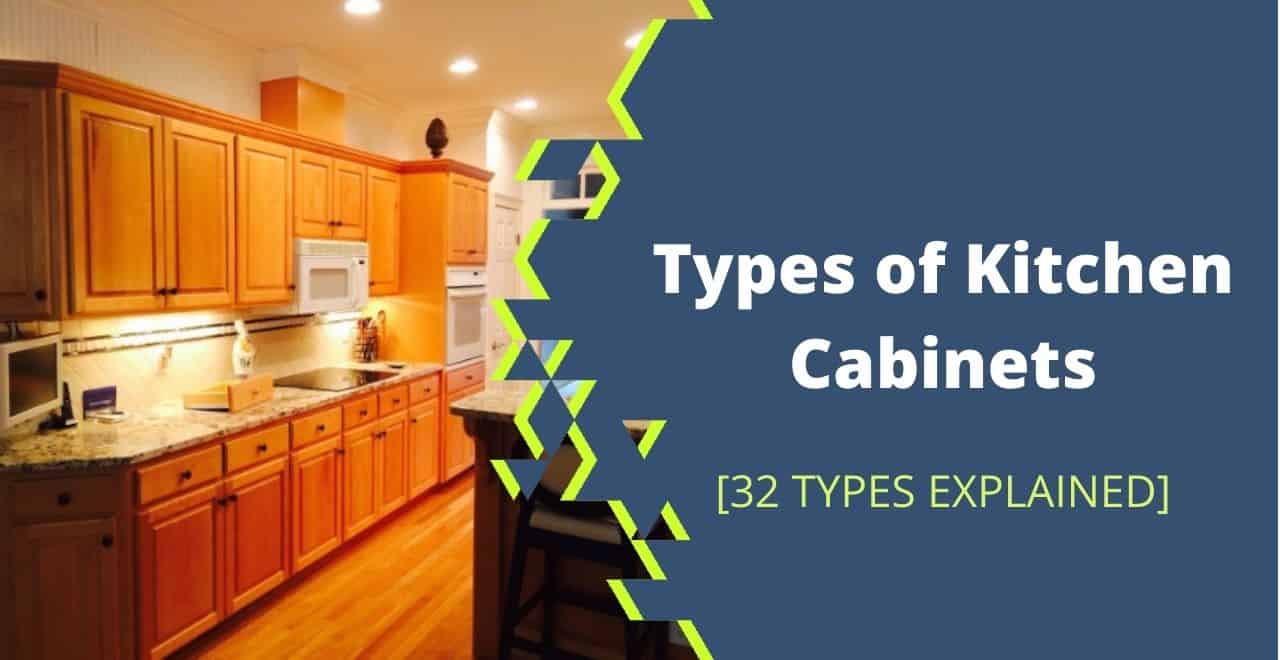Choosing a suitable cutting board is perplexing to both professional and home chefs. Even more puzzling is when you have to choose between a bamboo and a wood cutting board.
But worry not! I am about to ease your decision-making process.
I fully appreciate the pivotal role that a cutting board plays in the kitchen, which explains the need to make an informed decision. Their usefulness explains the global market size surge, projected to grow to USD 13371.14 million by 2027. This is a huge rise from USD 10980.80 in 2021, according to the Digital Journal.
With this in mind, I will take you through an in-depth analysis of each of these two wooden boards. I will discuss their pros and cons and dive deeper into comparing their respective properties.
In the end, I’m confident that you will be at ease in choosing between a bamboo or a wood cutting board. Stay with me to the end.
JUMP TO: Table of Comparision | Bamboo Board | Wooden Board | Bamboo and Wood Cutting Board Difference | Bottomline |
- A bamboo cutting board is harder than wood, making it quite unfriendly to your knives.
- Wood is highly porous and thus absorbs more water than bamboo, which can affect its longevity.
- Price-wise, bamboo cutting boards are cheaper than wood.
- Bamboo cutting boards require less maintenance than wood and are more eco-friendly.
Quick Overview (Table Comparison)
| Parameter | Bamboo Cutting Board | Wood Cutting Board |
| Hardness | Slightly harder than most hardwoods | Hardness depends on the type of wood |
| Porosity | Low | High |
| Toxicity | Non-toxic | Some varieties, such as teak, have some toxins |
| Price | Cheap | Relatively pricey |
| Durability | Durable | More durable |
| Variety of choices | Limited | Several varieties |
| Knife Friendliness | Not friendly | Friendly |
| Eco-friendliness | Very eco-friendly | Not eco-friendly |
| Maintenance | Requires less maintenance | Requires more maintenance |
Bamboo Cutting Board – Explained
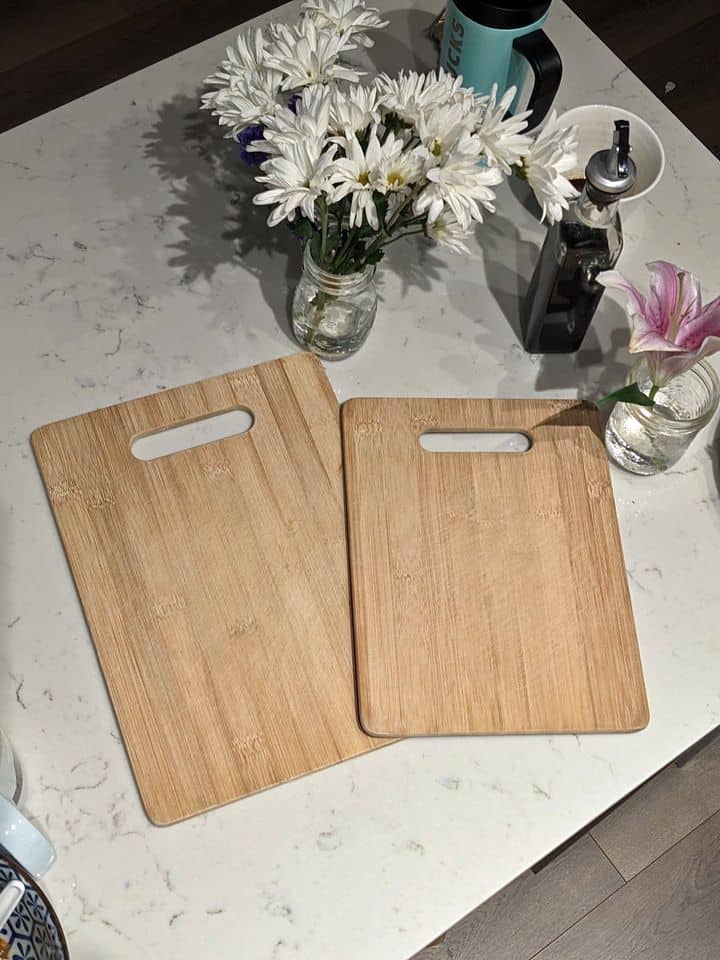
Bamboo cutting boards are trendy nowadays for home cooks and other culinary needs. It could be because bamboo is so beautiful to behold, affordable, and durable.
Do you know that bamboo is a type of grass, not real wood?
Yes, that’s correct.
But that doesn’t compromise the hardness and longevity.
In fact, if you are conscious and passionate about environmental conservation, a bamboo cutting board is an ideal purchase. Thanks to its eco-friendly nature!
So, you may ask, is a bamboo wood cutting board as good as wood?
Well, it depends on your needs and preferences.
Here are some pros and cons of bamboo cutting boards:
Pros:
- Eco-friendly: Bamboo is 100% biodegradable, readily available, and eco-friendly. It doesn’t need chemicals or fertilizers to grow. This grass has robust roots, making the soil on which it grows more stable. Better yet, it releases 30% more oxygen and absorbs two times more carbon dioxide than regular trees.
- Renewable and Sustainable: Bamboo is highly sustainable and easily renewable. Unlike wood, which takes 30 to 40 years to reach maturity, bamboo can grow 2 to 3 feet daily! That means it can reach maturity within three or four months.
- Safe and Hygienic: Bamboo has natural antibacterial properties in its fibers. As a result, it is less likely to harbor bacteria that can cause food-borne illnesses.
- Aesthetically Appealing: Bamboo cutting boards look and feel organic. Its surface has a uniform light brown color and consistent, refined grains.
- Durable: The sturdy and durable nature of bamboo makes it suitable for constructing varieties of home furniture. Bamboo cutting boards are super-durable and hardly show knife marks.
- Affordable: Since bamboo is readily available, renewable, and fast-growing, it’s relatively inexpensive to produce. For this reason, bamboo cutting boards are reasonably low-priced.
- Lightweight: If you are looking for a light wood cutting board that is easy to carry around the kitchen, bamboo is an ideal choice compared to wood.
Cons
- High Silica Content: The high mineral silica present in bamboo cutting boards can cause more harm to knives than wood boards. The silica gradually wears down the blade, compromising its longevity.
- Prone to splinter: Bamboo cutting boards need constant seasoning to prevent drying and cracking. They also need proper care and maintenance to keep them in good shape.
- There is a possibility of Contamination: Manufacturers use strong adhesive glue to bind together the thin strips of bamboo grass when making cutting boards. Some variations of this glue have a toxic chemical known as formaldehyde.
Wood Cutting Board – Explained
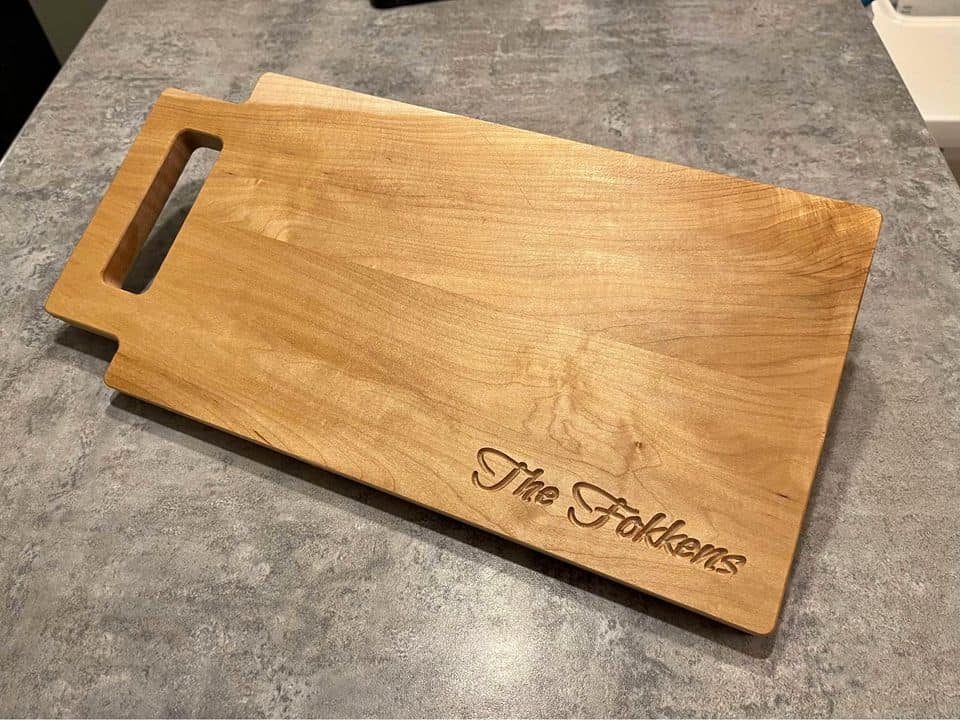
Wood cutting boards are still popular in most modern and traditional kitchens. The organic look, versatility, durability, and easy care of wood make it a go-to choice for professionals and home cooks.
Wood cutting boards are available in varieties of hardwoods and softwoods.
Hardwoods include oak, maple, cherry, and walnut, while softwoods are the likes of cedar and pine.
The woods vary in porosity, hardness, density, and water resistance. Wood also comes in face grain, edge grain, and end grain. These also affect the cutting board properties.
For example, end-grain cutting boards are more resistant to knife cuts than their counterparts.
So, when comparing bamboo and wood cutting boards, consider the specific type of wood you intend to buy.
Related Read: Acacia Vs. Bamboo Cutting Board [7 Differences Explained]
Here are the standard pros and cons of wooden cutting boards:
Pros
- Durable: Wood cutting boards are highly durable. They can handle consistent use without getting damaged. They can even last a lifetime with thorough constant cleaning and regular maintenance.
- Hygienic: Many wood species have antimicrobial compounds, meaning they kill bacteria that try to grow in their structure. Bacteria can hardly survive a few minutes on a wooden cutting board.
- Gentle on Knives: Hardwood cutting boards are friendlier on knives than their bamboo counterparts. As such, your knife will stay sharp longer when using a wood cutting board.
- Self-Heals and Repairs: Wood cutting boards with end grain can absorb cuts and seals up naturally after some time.
- Less Silica: Wooden cutting boards have way less silica than bamboo boards. Therefore, they are ideal if you want to keep your blade sharp and in good condition for a long time.
- Fashionable: Hardwood cutting boards with end grain have very alluring patterns. You can also mix several wood species to create a diverse-tone cutting board.
Cons
- Heavy: Wood cutting boards are generally heavier than those made from bamboo.
- Cannot Tolerate Excessive Moisture: Too much exposure to water to moisture is damaging to a wooden cutting board. Never soak it in the sink or wash it in a dishwasher. Retained water can form a good platform for mold growth, warping, and cracking.
- Pricey: Compared to bamboo, wood cutting boards are more expensive.
9 Key Differences Between Bamboo and Wood Cutting Boards
Hardness
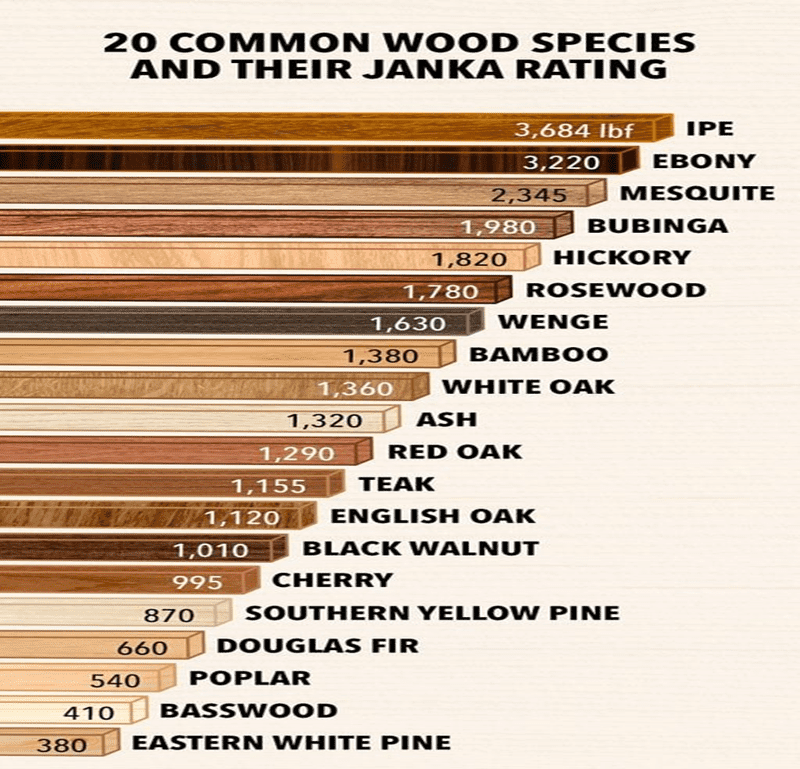
Source: Family Handyman
Choosing the suitable hardness for your cutting board is crucial. If your cutting board is too hard, it will easily dull your knife. On the flip side, if the cutting board is too soft, it will easily mar and absorb water.
Therefore, a good cutting board should be less prone to dents and scratches from your knife.
Janka Hardness rating scale rates bamboo at 1,380, slightly higher than most woods. As such, you need not worry about knife marks on your wood-cutting board if you are using bamboo.
Bamboo’s hardness also means that it remains sanitary for a long since it neither takes scratches nor absorbs water easily.
Verdict: Bamboo cutting boards take the win in this category because they are harder than wood cutting boards.
Porosity
The ability of a cutting board to resist water should be an essential consideration. Wood with high porosity is more apt to absorb food and liquid into the pores.
The best wood for a cutting board should have more closed pores because this minimizes water penetration.
Compared to wood, bamboo is far less absorbent, thus, more water-resistant. Wooden cutting boards are highly absorbent. Consequently, they easily absorb water and stains.
Verdict: In this regard, bamboo is the winner. It has more closed pores that make it water-resistant.
Toxicity
Here’s something we can both agree on…
The sanitary of cutting boards cannot be compromised. Such a compromise would result in a dirty or moldy cutting board, leading to diseases and other infections.
So, which of these two boards is less toxic?
Bamboo has natural antibacterial properties that help it to grow rapidly in nature. The antibacterial properties help eliminate bugs that try to thrive on the bamboo plant.
Additionally, being less porous, bamboo is water resistant, preventing bacteria from forming on the cutting board.
Wood, on the other hand, some wood varieties, such as teak, have been found to have some toxic deposits.
Verdict: Bamboo cutting boards are the winner here. It has antibacterial properties that make it safer than wood.
Also Read: Wood Cutting Board Vs. Plastic Board [Which is Safer?]
Price
The cost of a cutting board is also a major consideration when buying one.
Let me clarify…
When seeking to buy a cutting board for your kitchen, budget is one of the things that you put into consideration. In most cases, we all end up buying that which is within our budget.
Bamboo cutting boards are cheaper than wood because it is cheaper to produce bamboo. Wood is expensive since it takes longer to grow and it’s thicker.
Verdict: Between wood and bamboo, the latter is more pocket-friendly, thanks to its cheaper production costs.
Durability
Nothing satisfies a homeowner more than purchasing an item that will last for years, if not a lifetime.
That notwithstanding, it’s also true that durability hugely depends on how well you take care of the item.
But let’s compare wood and bamboo’s durability based on their reaction to different elements such as heat, water, and knives.
When it comes to heat resistance, bamboo trails wood. It isn’t waterproof and will most likely warp and crack under extremely high temperatures.
However, bamboo beats wood when it comes to resistance to water and scarring. Whereas wood is highly porous and absorbs water, bamboo is water-resistant and hard.
When it comes to lasting long, wood outdoes bamboo since it is thicker.
Here’s the bottom line…
The durability of your cutting board will be highly determined by how well you take care of it.
Verdict: Wood, is more durable than bamboo. It is more resistant to heat and hardly warps or cracks easily.
Variety of Choices
Variety is an important consideration when choosing a cutting board, after all, every person has their taste.
The hardwoods that make cutting boards are of different types, such as:
- oak
- walnut
- Cherry
- maple
- acacia
- teak
- beech
We can also classify wood according to the grain; face grain, end grain, or edge grain.

Lastly, according to your needs, you can get wood-cutting boards of different sizes, thicknesses, and shapes.
Verdict: Wooden cutting boards are the outright winners under this category. They feature several varieties of different hardwoods.
Knife Friendliness
Chefs are always mindful of their knives.
So, between these two boards, which is more friendly to knives?
Unlike bamboo, which has a high amount of silica, wood doesn’t. Mineral silica is responsible for wearing down knives and blunting their edges.
Additionally, bamboo is tough, thus blunting knives easily. Wood, on the other hand, has fibers, which act as natural buffers, making it knife-friendly.
Verdict: Wood is the winner in this category. It’s more friendly to your knife, unlike bamboo that is very hard and blunts knives.
Eco-Friendliness
Are you an environment enthusiast?
If yes, then this point is definitely one of your areas of consideration when choosing between wood and bamboo cutting boards.
According to research, bamboo has numerous benefits to the environment. Some of these include:
- It grows fast and thus easily renewable
- It can regenerate on its own
- It releases 35 percent more oxygen into the atmosphere than an ordinary tree.
- Its absorption of carbon dioxide stands at 12 tonnes per hectare per year.
Verdict: Bamboo is the outright winner when it comes to environment-friendliness.
Maintenance

Proper maintenance is key to ensuring that you prolong the lifespan of your cutting board.
Both materials require some level of maintenance since they are porous. They require frequent cleaning and sanitizing to eliminate and prevent the formation of bacteria.
Bamboo is less porous than wood and thus highly water-resistant. Consequently, it’s less susceptible to damage than wood, which is highly affected by consistent exposure to moisture and knives.
Verdict: Bamboo is the winner here. It requires less maintenance than wood since it less porous and can resist water.
Wrapping it up
Bamboo and wood make good cutting boards. However, they rate differently for different properties, which gives you a chance to make an informed decision.
We have compared all the key characteristics, and bamboo emerges as the winner in most categories. However, depending on your preferences, don’t hesitate to make your personalized choice.
![Is Bamboo Wood Good for Cutting Boards?[8 Reasons Explained] Is Bamboo Wood Good for Cutting Boards?[8 Reasons Explained]](https://houseadorable.com/wp-content/uploads/2023/01/316002766_5887666997938019_9068589372518329358_n.jpg)
![Acacia Vs. Bamboo Cutting Board [7 Differences Explained] Acacia Vs. Bamboo Cutting Board [7 Differences Explained]](https://houseadorable.com/wp-content/uploads/2022/12/fetured.jpg)
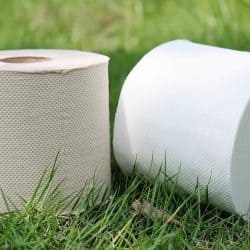
![How To Care For Bamboo Cutting Board? [Steps+Tips Explained] How To Care For Bamboo Cutting Board? [Steps+Tips Explained]](https://houseadorable.com/wp-content/uploads/2022/12/Bamboo_Heat_Resistant_1.jpg)
![Charcuterie Board Vs. Cutting Board [8 Differences] Charcuterie Board Vs. Cutting Board [8 Differences]](https://houseadorable.com/wp-content/uploads/2023/01/316322082_5650827684977137_862859335334204275_n.jpg)
![How Much Does It Cost to Build a Kitchen Island? [Custom Made+DIY] How Much Does It Cost to Build a Kitchen Island? [Custom Made+DIY]](https://houseadorable.com/wp-content/uploads/2022/03/cost-of-kitchen-island.jpg)
![Wood Cutting Board Vs. Plastic Board [Which is Safer?] Wood Cutting Board Vs. Plastic Board [Which is Safer?]](https://houseadorable.com/wp-content/uploads/2023/01/wood-board.jpg)
